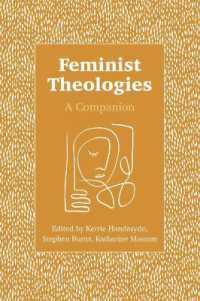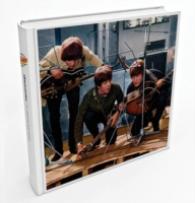- ホーム
- > 洋書
- > 英文書
- > Performing Arts
Full Description
Trumpets in the Mountains is a compelling ethnography about Cuban culture, artistic performance, and the shift in national identity after 1990, when the loss of Soviet subsidies plunged Cuba into a severe economic crisis. The state's response involved opening the economy to foreign capital and tourism, and promoting previously deprecated cultural practices as quintessentially Cuban. Such contradictions of Cuba's revolutionary ideals elicited an official preoccupation with how twenty-first-century cubanÍa, or Cubanness, was to be understood by its citizens and creatively interpreted by its artists. The rural campesino was re-envisioned as a key symbol of the future; the embodiment of socialist humility, cultural pureness, and educated refinement; potentially the Hombre NovÍsimo (even newer man) to replace the Hombre Nuevo (new man) of Cuban communist philosophy. Campesinos inhabit some of the island's most isolated areas, including the mountainous regions in central and eastern Cuba where Laurie A. Frederik conducted research among rural communities and professional theater groups. Analyzing the ongoing dialogue of cultural officials, urban and rural artists, and campesinos, Frederik provides an on-the-ground account of how visions of the nation are developed, manipulated, dramatized, and maintained in public consciousness. She shows that cubanÍa is defined, and redefined, in the interactive movement between intellectual, political, and everyday worlds.
Contents
List of Illustrations ix
Acknowledgments xi
Prologue: The Red Blood of Cuban Identity xix
Introduction: More than Just Scenery 1
1. Revolution and Revolutionary Performance or, what happens when el negrito, la mulata, and el gallego meet el Hombre Nuevo 41
2. Artists in the Special Period, Option Zero, and the Hombre Novísimo or, the heroic rescue of Liborio and Elpidio Valdés 76
3. Creative Process and Play-Making in Cumanayagua or, waiting for Atilio on the side of a country road 111
4. The Inundation of Siguanea and Cuba or, the near drowning and rescue of Cuba's Godot 142
5. Cultural Crusades and the Unsung Artists of Guantánamo or, how Don Quixote Saves humble Harriero from the devil 175
6. Storytellers and the Story Told: Voices and Visions in the Zones of Silence or, who wins the wager if the cockfight ends in a draw 218
7. Dramatic Irony and Janus-Faced Nationalism or, the triumphant stage return of el negrito and mister Smith 259
Notes 279
Glossary 291
Sources Cited 297
Index 325








